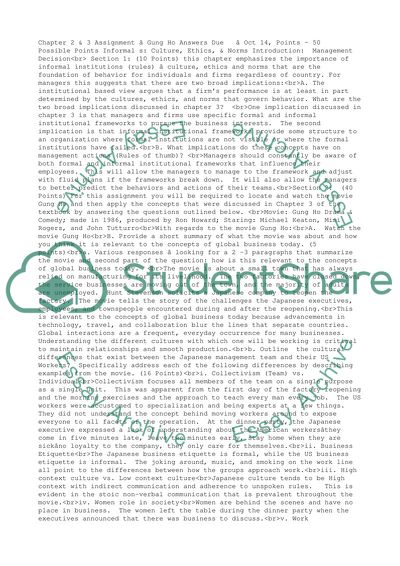International Business (CH2, CH3, and Movie 'GUNG HO) Review. Retrieved from https://studentshare.org/business/1581839-international-business-ch2-ch3-and-movie-gung-ho
International Business (CH2, CH3, and Movie 'GUNG HO) Review. https://studentshare.org/business/1581839-international-business-ch2-ch3-and-movie-gung-ho.


